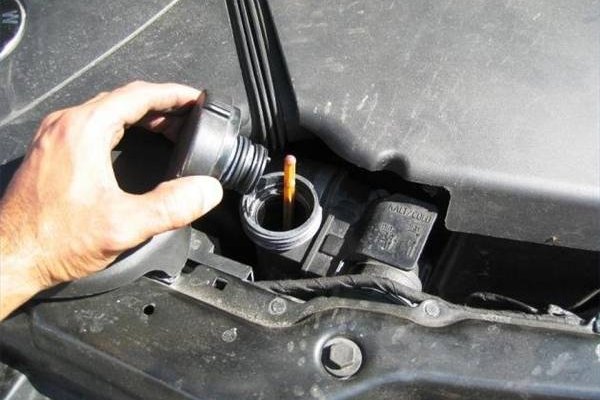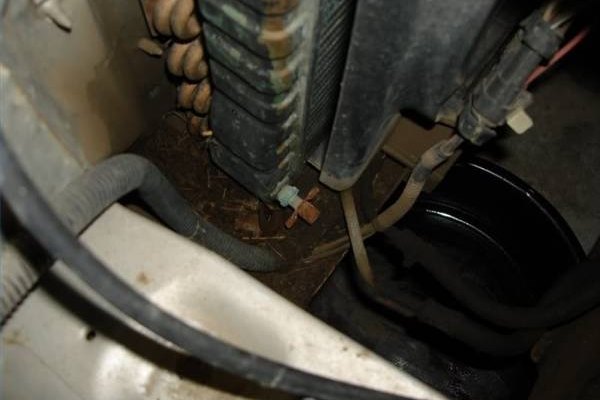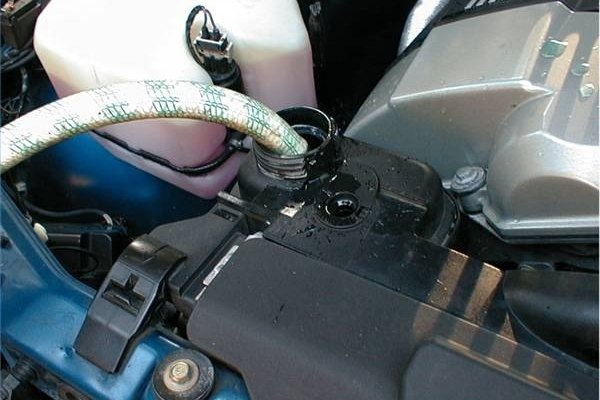How to Repair a Clogged Radiator
by Cassandra TribeUpdated July 10, 2023
The most common cause of a clogged radiator is old radiator fluid. Fluid that has never been changed, or sat for long periods without the engine running, creates rust and sediment that blocks the radiator fins and hoses. Fortunately, you can repair a clogged radiator easily. All it takes is some running water, a can of radiator flush and a few hours.
Things You'll Need:
- Bucket
- Gunk C2124 Heavy Duty Radiator Flush
- Garden hose
- Running water
- Radiator fluid
- Tin foil (if desired)
1. Park your car on a level surface
Park your car on a level surface. Place a bucket under the radiator drain petcock, typically located on the bottom of the radiator toward the driver's side. Wait for your engine to cool down--you should be able to touch the radiator without being burned before proceeding.
2. Remove the radiator fill cap and pour in an entire bottle of Gunk C2124 Heavy Duty Radiator Flush

Remove the radiator fill cap and pour in an entire bottle of Gunk C2124 Heavy Duty Radiator Flush into the radiator. Replace the cap.
3. Start your engine and let it run for 15 minutes
Start your engine and let it run for 15 minutes to move the C2124 Flush completely through your cooling system. Turn your engine off and wait for it to cool again before proceeding.
4. Remove your radiator fill cap

Remove your radiator fill cap. Reach down and open the drain petcock by turning it counter clockwise and let your radiator fluid drain into the bucket.
5. Connect your garden hose to a water supply

Connect your garden hose to a water supply and put one end in the radiator fill cap. Turn the water on and let it run through your cooling system. When the water coming out of the petcock is perfectly clear and draining smoothly (not too slowly or erratically) your clogged radiator is cleared.
Tips and Warnings
Make a funnel out of tinfoil from your drain petcock to your bucket to help prevent any radiator fluid from spilling on the ground.
You must flush the system with water until it runs clear. If not, the radiator flush and old sediment will remain in your cooling system and can cause damage to your engine.
Video showing clogged radiator symptoms:
Helpful comments on this video:
- Partially blocked can be harder to diagnose it may also stop heat from locking up a viscous fan causing a secondary symptom. Check radiator is hot all over the face (turn engine off). If any cool areas then your radiator is partially blocked. Hot water cannot flow into those channels. You will find that whilst the middle channels are badly blocked, the channels at the inlet pipe and at the far end would still be open and allowing a reduced flow which does not have time to cool properly under loaded conditions such as going up steep hills but may still run properly under normal driving conditions.
- Thank you for the video. I'm here because someone put stop leak in my radiator. It's a new car and he claims its wonderful stuff. On my way to and back from work my car over heated. I got home and checked the engine. After hours I found the radiator outlet pipe was clogged so bad you would be lucky to put a wire through the pipe. I tried cleaning out the stop leak but it fused to the pipe and was incredibly strong and rubber like. I now need a new pipe and radiator. Rather pay extra for a job well done that skimp out and cost yourself a new engine.
Tips
- Make a funnel out of tinfoil from your drain petcock to your bucket to help prevent any radiator fluid from spilling on the ground.
Things You'll Need
- Bucket
- Gunk C2124 Heavy Duty Radiator Flush
- Garden hose
- Running water
- Radiator fluid
- Tin foil (if desired)
Warnings
- You must flush the system with water until it runs clear. If not, the radiator flush and old sediment will remain in your cooling system and can cause damage to your engine.
Writer Bio
Cassandra Tribe has worked in the construction field for over 17 years and has experience in a variety of mechanical, scientific, automotive and mathematical forms. She has been writing and editing for over 10 years. Her areas of interest include culture and society, automotive, computers, business, the Internet, science and structural engineering and implementation.




